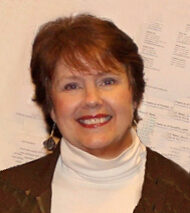
Nancy Huntting, Aesthetic Realism consultant, writes:
What way of seeing another person makes for love? What way of seeing people different from ourselves is needed for racism to really end—and for economic injustice to truly end? The answers to these urgent questions are in “The Largest Subject in the World”—the beautiful, thrilling new issue of The Right of Aesthetic Realism to Be Known.
The commentary by Ellen Reiss begins:
Dear Unknown Friends:
With this issue we begin to serialize the lecture Things Are Likened to Each Other, which Eli Siegel gave in 1971. It is about—magnificently about—what Aesthetic Realism shows to be the largest subject in the world: Sameness and Difference. From an authentic relation of these opposites—from their oneness—come all beauty, kindness, authentic science, love, justice (including economic and racial justice), learning, and true imagination. From these opposites used falsely come every unkind and unjust happening and way of seeing, including racism, cruelty, economic exploitation, selfishness, insincerity, bad “art,” bad “science,” government that’s unfair to people, and conceit, both everyday and massive.
“All beauty,” explained Eli Siegel in a central Aesthetic Realism principle—“All beauty is a making one of opposites, and the making one of opposites is what we are going after in ourselves.” No opposites are more fundamental than sameness and difference, and in the present lecture Mr. Siegel is showing that the desire to make these one is constant and crucial in art. So this talk is a means of knowing what Aesthetic Realism explains: that aesthetics is urgent—that in order for us to have the lives we want, for human beings to get what they deserve, for the full success of what people now are demanding in America’s streets—we have to see how sameness and difference are made one in art.
Love Is about These Opposites
Let’s take the great and vexing subject of love. Whenever there has been a feeling of love that is big and true, the following has been in it: This person is different from me—how widely, wondrously, excitingly different from me he or she is! Yet I feel this person stands for who i am, my very being!
There has been so much trouble about love, including about love that seemed to begin well. And all the trouble has come because people do not see in a clear way that sameness and difference can really be one. A tremendously frequent mistake about love is to make the loved one an adjunct of yourself—see the person as yours, feel the main thing about the person is his or her relation to you. This is making a false sameness to yourself—it’s a wiping out of the chosen one’s infinite, vital relation to the world different from you. Then, you’re angry when the person shows plainly a difference from you: has the nerve to disagree with you, or has a quite different way of doing something from how you would do it, or shows in some other fashion that he or she is not under your control but is an independent, distinct person.
In the Preface to his Hot Afternoons Have Been in Montana: Poems, Eli Siegel writes:
Poetry, like life, states that the very self of a thing is its relations, its having-to-do-with other things….The technique of poetry aims for the intensification of a thing through showing the likeness of what is in that thing to something else—to everything else, as different.
The unkindness (also the unintelligence) throughout history has come because people don’t feel that their relation—their likeness—to all that’s different from them intensifies them and makes them important. In fact, what Aesthetic Realism shows to be the most hurtful thing in the human self is based on a contrary feeling. That most hurtful thing is contempt, and contempt is “the lessening of what is different from oneself as a means of self-increase as one sees it.” Contempt, which works in people hour after hour, is a sleazy and untrue sameness-and-difference. It’s the feeling, I make myself big by looking down on what’s different from me. If I have to see myself as really like what’s not myself—my individuality will be squashed, and my glory and self-importance will go down the drain.
We need to see clearly the opposites in aesthetics—in what is beautiful—to be fully convinced that our kinship with others enhances our individuality, doesn’t lessen it. We need to see evidence, vivid and wide-ranging, that the oneness of sameness and difference is beautiful, is art, is what’s behind every instance of important expression and perception. That is what the lecture we’re serializing is about….Read more